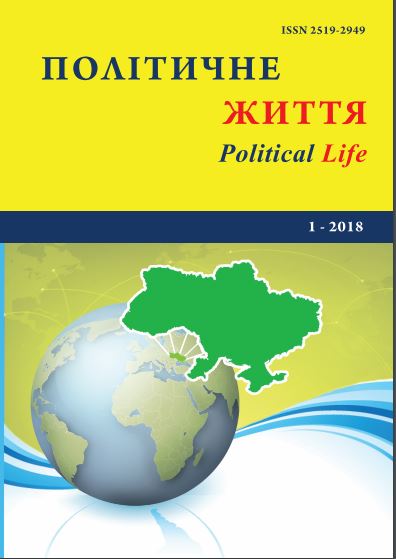The origins and driving forces of European integration: a retrospective analysis.
DOI:
https://doi.org/10.31558/2519-2949.2018.1.21Keywords:
Europe, analysis, retrospective, conflict, tendencyAbstract
The article presents an author’s view of the origins and driving forces of European integration processes. As one of the key driving forces of political and economic development in Europe, the author examines the evolution of bourgeois values, which were largely complemented by the achievements of the Reformation and the Enlightenment. The evolution of the elites who were bearers of these values had a projection in a series of bourgeois revolutions in European countries (the Netherlands, England, and France).
The article proposes consideration of general tendencies of foreign policy vectors of European countries in conjunction with a retrospective analysis of conflicts from the beginning of the Modern Age to the middle of the twentieth century. An overview of the main European wars, which involved almost all states complemented by the analysis of post-war system agreements and European scenarios. In particular, the formation of the Westphalian, Viennese, Versailles-Washington systems of international relations was analysed, which greatly deepened the contradictions between the leading European countries and every 50- 60 years experienced devastating wars.
The study of the formation of the ideas of European unity from the age of the Enlightenment to the completion of the Second World War as a method of preventing military conflicts, complemented the general picture of the retrospective. An overview of the concepts of "Eternal Peace" (I. Kant), "PanEuropean Union" (R. Kudenhov-Kallergi), "Declaration of Schumann" is presented.
The post-World War II system of peace and sustainable development in Europe initially united the coal and steel industries in the form of the European Coal and Steel Community. The organization joined France, Germany, Italy, Belgium, the Netherlands, and Luxembourg. The said structure became one of the first to establish a system of cooperation in key sectors of the post-war economy, reconciling France and Germany, creating the preconditions for further integration processes in Europe.
References
Cameron F. The European Union and the Challenge of Enlargement / Fraizer Cameron // The Enlarging the European Union: Relations between the EU and Central and Eastern Europe. –London – New-York: Bailey, 1997. – P. 5 – 45.
Dinan D. Europe recast. A history of European Union / Desmond Dinan . – London: Lynne Reiner, 2004. – 165 p.
Mccormic J. Understanding the European Union: A Concise Introduction / John Mccormick. – Hampshire: Palgrave, 2002. – 179 p.
Marise C. The enlargement of the European Union / Cremona Marise. – New – York: Oxford University Press, 2005. – 256 p.
Frazer C. The future of Europe. Integration and enlargement / Cameron Frazer. – London: Rutledge, 2005. – 170 p.
Копійка В., Шинкаренко Т. Європейський Союз: заснування і етапи становлення: Навч. посібник для студ. вищих навч. закл./ Інститут міжнародних відносин Київського національного ун-ту ім. Тараса Шевченка. – К.: Ін Юре, 2001.– 447 с.
Посельський В. Європейський Союз: інституційні основи європейської інтеграції / В. Посельський . – К.: Смолоскип. – 2002. – 168 с.
Полтораков О. Європейська політична інтеграція в сучасній цивілізаційній системі: Дис... канд. політ. наук: 23.00.04 / НАН України; Інститут світової економіки і міжнародних відносин. – К., 2004. – 199 c.
The Schuman Declaration – 9 May 1950 [Електронний ресурс]. – Режим доступу: https://europa.eu/european-union/about-eu/symbols/europe-day/schuman-declaration_en

